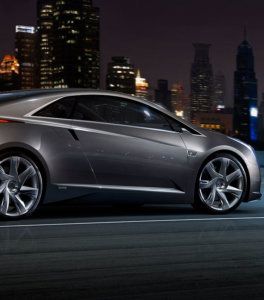
Suggesting that the automotive industry needs to evolve if it is to flourish is a little like pointing at an elephant and calling it big. But the automotive industry is one that can barely move for all the elephants in the room. This is an industry we love, and as we have suggested elsewhere, it is a key strategic and economic sector in the future health of the country.
But the changes that are starting to be felt across the industry haven’t come a moment too soon. There is so much to address, so much to do, so many questions the industry must ask itself. Change is needed, and it is happening. And all of this raises some very interesting questions about how the industry will attract, develop, and in particular deploy future talent. I think we find ourselves at a very interesting moment where one of the big questions is, what kind of talent will we actually need?
The consumer’s ability to research before they buy is changing the dynamic of the modern dealership. Increasing purchasing power and discernment, not to mention a broader array of trigger factors and aspirations, is impacting the industry to the extent that a few of the more forward-thinking dealers are changing their whole business model. New businesses are being created, founded on a desire to abandon traditional retail models and find a wholly new way of doing business that is inspired by personal experience or the examples set by different, newer retail sectors. There’s a lot to be said about this and I have no doubt we’ll revisit the theme in the future.
Something else is happening too. Driven by more aspirational buyers (and the need, yes, to address a broader diversity of customers) volume and premium, and indeed premium and luxury manufacturers are starting to find some common ground. This raises some very interesting resource challenges for our sector and its dealership business models. Perhaps it even questions the requirement for dealerships at all, in the long run, although I am sure that is an issue of some debate.
Erin Baker talked about some of these environmental changes in the Daily Telegraph this week. She was discussing Andy Palmer’s (AML) timely acknowledgment of the woman buyer, but she also made a point about how Bentley had grasped the idea of a new market when they “correctly surmised that by designing cars where the grab handle won’t chip nail varnish and make-up won’t stain the cream Napa cow hide…” they provided a “practical application of a focus on the female market…addressing the needs of the female car-buyer”.
I’ve written plenty about women in our industry, and I have no doubt I will again. But what’s interesting here is how these shifting market forces are encouraging different segments of the market to learn from one another. Are we finally entering a realm where traditional boundaries will slowly elide and dissolve forever?
I’m absolutely not suggesting that in ten years’ time there will be no very expensive cars and no very (well, relatively) cheap ones. But New Product Development is the statement of intent here, and as statements go, there’s plenty of evidence around that volume, premium and luxury are all learning from one another, and that only a very few manufacturers want to put all their eggs in one basket any more.
BMW, if you exclude Mini, typically starts squarely in the middle of the premium price tag range. But outside the showcase of Geneva, the fabulous i8 is still the talk of the industry, at an atypical £100K (with some dealers adding 50% onto the price tag due to sheer demand). How does someone running a retail business cope with that? Does the skill set, the sales process, the aftersales process, need to change? How much will the customer change?
Honda is renegotiating its way into the Supercar market with the NSX, which set tongues wagging at Detroit. For a brand for whom £30K would be considered a reasonably solid price tag, this requires a new approach. On its launch, the £130K Range Rover landed squarely in Bentley and Aston Martin territory. At the same time, manufacturers are looking at stepping into premium via product, not price: enter the Bentley Bentayga – and with premium to luxury with the Mercedes AMG.
How will the industry adapt to the different and changing expectations of customers in this shifting environment? Does it mean retailers used to selling volume will have to employ specialist sales staff? How will they train them up? What about the role and quality of the increasingly in-demand aftersales in all of this? Can everybody deliver a premium service that you might normally not expect across the board? How do super luxury brands reach out to new markets?
What does all this mean for retail? It means it needs to be agile. It needs to be informed. It needs to be diverse. Retailers need to be skilled. They need to provide a different, more engaging, more technology-enabled customer experience. As I’ve said, forward-thinking automotive leaders are starting to look over the fence at other retail sectors to see what they can learn. Many people within the industry are talking about being able to learn from Apple’s retail model. There’s even a lot of speculation about whether Apple will enter the fray. Interesting times, indeed.
What’s your take on the way the changing market will affect talent?




